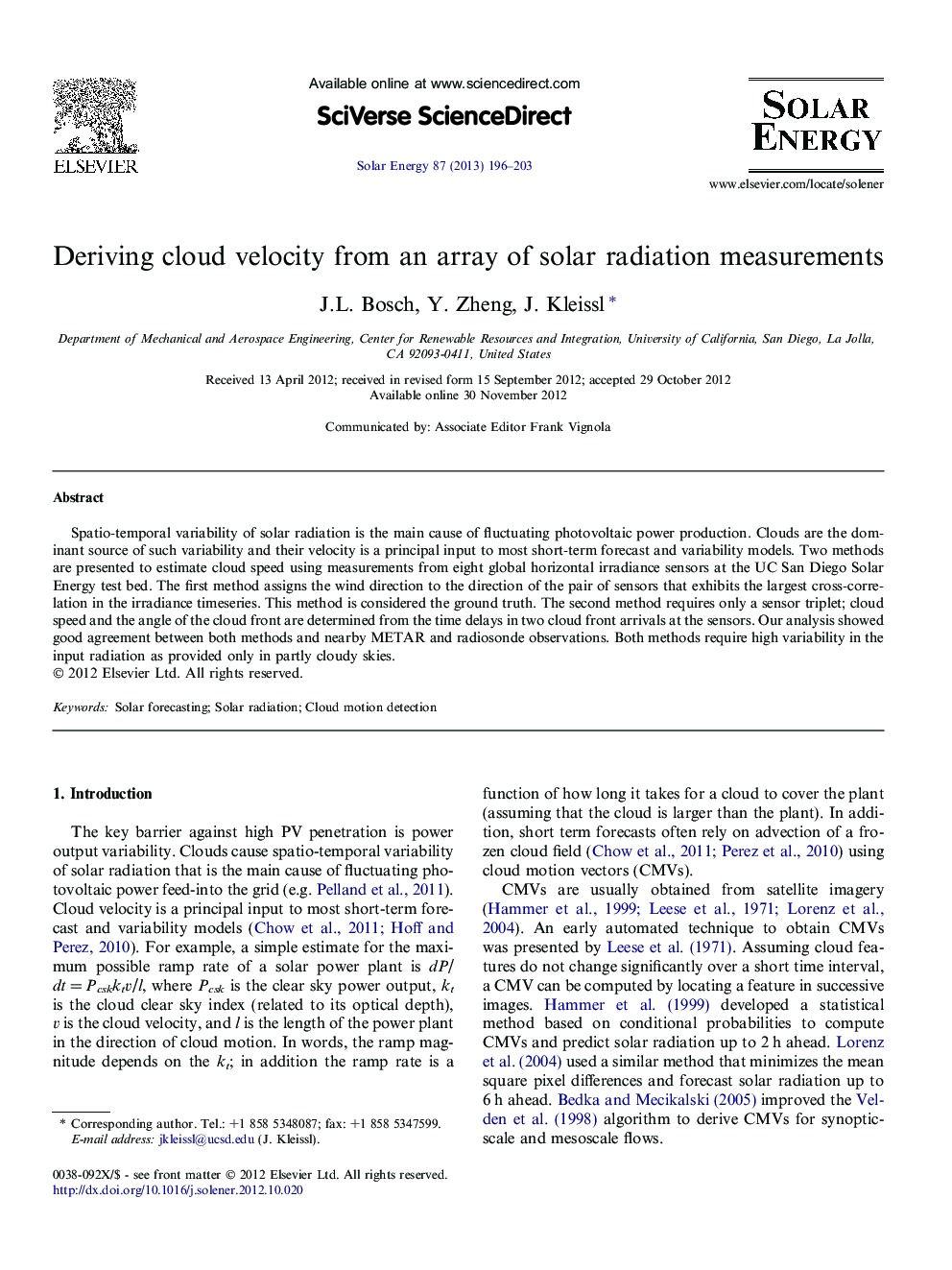| Article ID | Journal | Published Year | Pages | File Type |
|---|---|---|---|---|
| 1550689 | Solar Energy | 2013 | 8 Pages |
Spatio-temporal variability of solar radiation is the main cause of fluctuating photovoltaic power production. Clouds are the dominant source of such variability and their velocity is a principal input to most short-term forecast and variability models. Two methods are presented to estimate cloud speed using measurements from eight global horizontal irradiance sensors at the UC San Diego Solar Energy test bed. The first method assigns the wind direction to the direction of the pair of sensors that exhibits the largest cross-correlation in the irradiance timeseries. This method is considered the ground truth. The second method requires only a sensor triplet; cloud speed and the angle of the cloud front are determined from the time delays in two cloud front arrivals at the sensors. Our analysis showed good agreement between both methods and nearby METAR and radiosonde observations. Both methods require high variability in the input radiation as provided only in partly cloudy skies.
► Two methods to estimate cloud speed from radiometric measurements are introduced. ► Both methods showed good agreement with nearby METAR and radiosonde observations. ► High irradiance variability is needed to obtain reliable results from both methods.
